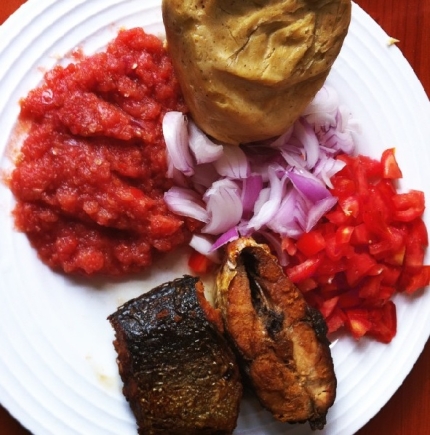
Fante Cuisine: Coastal Flavors and Culinary Heritage
The Fante people of Ghana’s Central Region have a cuisine that mirrors their environment—rich coastlines, bustling fishing communities, and fertile lands. Known for their seafood-based dishes, flavorful stews, and creative use of local ingredients, Fante cooking represents a proud culinary tradition that continues to thrive today. From palm nut soup to seafood light soup, Fante cuisine blends heritage, identity, and a deep respect for the ocean that sustains them.
The Central Role of Seafood
Fante cuisine is inseparable from the sea. With Cape Coast and Elmina serving as historic fishing hubs, fresh catch is a daily staple. Fish, crabs, shrimp, and lobsters often find their way into soups and stews, creating meals that are both nourishing and symbolic of the community’s intimate relationship with the ocean. Dried and smoked fish add extra depth of flavor, ensuring that no part of the catch is wasted.
Palm Nut Soup: A Signature Dish
One of the most celebrated dishes in Fante cooking is palm nut soup, locally called abɛ nkwan. Made from the extract of palm fruit, this soup is thick, flavorful, and often prepared with fresh fish or meat. Served with rice, fufu, or kenkey, palm nut soup is central to both everyday meals and festive occasions. Its rich, reddish appearance is as appetizing as its taste, making it a favorite across Ghana and a point of pride for the Fante people.
Light Soup with Seafood
Another hallmark of Fante cuisine is seafood light soup. Unlike palm nut soup, this dish has a lighter, broth-like consistency but carries bold flavors from tomatoes, onions, chili, and indigenous spices. When enriched with fresh crabs, fish, or lobster, light soup becomes a true coastal delicacy. It is a meal that brings families together and is often served during social gatherings or special occasions.
Kenkey and the Fante Table
Kenkey, a fermented corn dough dish, is another cornerstone of Fante cuisine. Distinct from Ga kenkey, Fante kenkey has a softer, more dough-like texture and is typically wrapped in plantain leaves rather than corn husks. Paired with fried fish and shito (spicy black pepper sauce), it is one of the most recognizable meals in Ghana, reflecting the Fante’s mastery of fermentation and flavor.
Social and Cultural Significance
Food is deeply tied to cultural expression in Fante communities. Shared meals are central to hospitality, festivals, and family traditions. Dishes like palm nut soup or kenkey with fish often feature during ceremonies, reinforcing bonds of kinship and identity. Cooking is also an act of preservation, as elders pass recipes and techniques to younger generations, ensuring the continuity of Fante culinary heritage.
Adaptation and Global Influence
While rooted in tradition, Fante cuisine is evolving. Urban households and restaurants adapt dishes for modern tastes, experimenting with presentation while keeping authentic flavors intact. In recent years, Fante dishes have gained visibility on the international stage, served in Ghanaian restaurants abroad and celebrated by the diaspora. These adaptations highlight the cuisine’s versatility while showcasing Ghana’s culinary richness to the world.
Conclusion
Fante cuisine is a living expression of culture, environment, and heritage. With seafood at its core and dishes like palm nut soup, light soup, and kenkey defining its character, Fante cooking is both deeply local and universally appealing. More than food, it is a cultural anchor for the Fante people—one that connects them to their history, their coastline, and each other.
RECOMMENDED ARTICLES
- Akan Day Names: Identity in Every Birth
- Homowo Festival: Celebrating Ga Heritage and Ghanaian Harvest Traditions
- Hogbetsotso Festival: Celebrating Ewe Heritage and Ghanaian Culture
- Damba Festival: Celebrating Northern Ghana’s Rich Cultural Heritage
USEFUL LINKS
